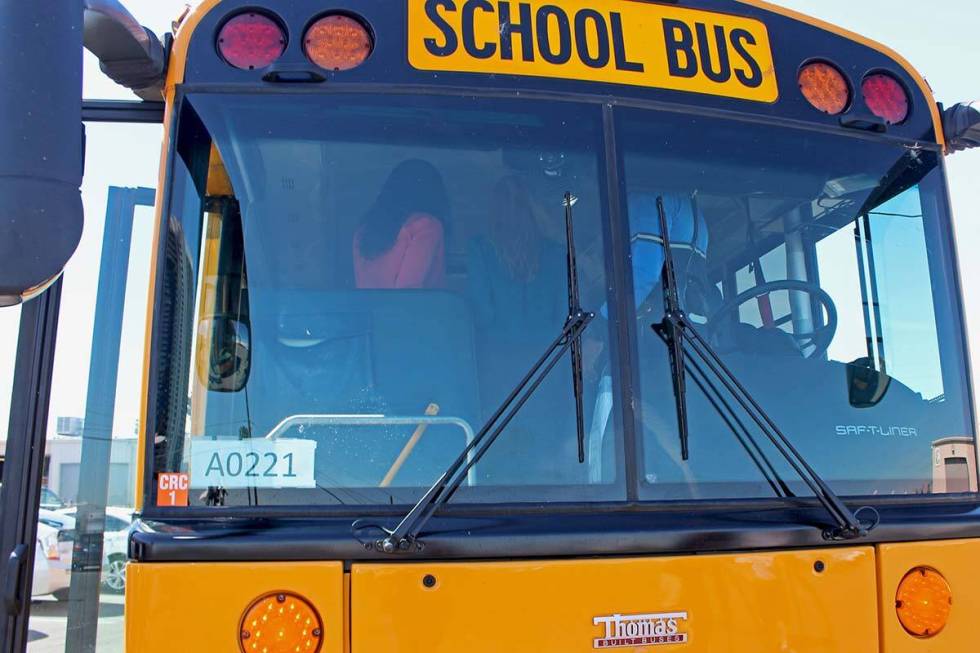Nevada students’ test scores drop sharply in English, math proficiency

Nevada schools saw sharp declines in proficiency rates in English and math last year during distance learning amid the COVID-19 pandemic, according to state data released Thursday.
Statewide, 41.4 percent of students demonstrated proficiency in English language arts and 26.3 percent in math during the last school year — down from 48.5 percent in English and 37.5 percent in math in the pre-pandemic 2018-19 school year.
The data from the Nevada Department of Education comes from the so-called “Smarter Balanced assessments” that third- through eighth-grade students are usually required to take.
The Clark County School District saw declines ranging from 5 to 16 percentage points — depending on the grade level — in proficiency in English compared with 2018-19. The biggest drops occurred among the youngest students.
The district saw a sharper drop in math scores, registering declines from 7 to 24 percentage points, with third and fourth grades hit hardest.
The results come with a caveat because only about half of Clark County School District students participated in the testing.
Not a ‘comprehensive view’
Federal waivers last school year curtailed a normal requirement for at least 95 percent participation in Smarter Balanced testing. Therefore, “The results do not provide a comprehensive view of Nevada student performance,” the state Education Department said in a news release.
Clark County schools operated under 100 percent distance learning beginning in March 2020 for about a year before campuses reopened for at least some in-person classes in the spring. Schools are offering full-time in-person classes for all grade levels this school year.
“Given the unprecedented pandemic that each of us experienced over the last 18 months, these test results show us how important it is for kids to be in classrooms learning from teachers with their peers,” Superintendent Jesus Jara said in a statement. “With a focus on returning to in-person learning, the district prioritized the mental health and well-being of our students.”
Jara noted that the school district solicited comments from the community at a Sept. 9 School Board meeting and committed to spending millions in federal coronavirus relief money “to address student achievement gaps resulting from the disruption caused by the pandemic.”
At the meeting, trustees unanimously approved an initial plan for how to spend more than $770 million over three years in Elementary and Secondary School Emergency Relief, or ESSER III, money.
As for the Smarter Balanced data, Jara said the school district, state and nation “must evaluate the value of these summative assessments and whether they serve the needs of our students and their academic success.”
“Assessment data should be readily available for our dedicated teachers to improve instruction and increase student achievement,” he said. “I look forward to a conversation on the value of the statewide assessments. The district, with its dedicated teachers and staff, will continue to do everything in its power to provide students the support they need to get back on track and succeed academically.”
Across Nevada, school district participation rates in testing ranged from a low of 54.1 percent in Clark County to 98.1 percent. Clark County schools account for about two-thirds of the state’s kindergarten through 12th grade public school students.
Despite the low participation rate, the data will help educators gauge the impact of the COVID-19 pandemic and areas where students need extra support, Jhone Ebert, state superintendent of public instruction, stated in the Education Department’s news release.
“Because of the impacts of the pandemic on education, assessing the quality of schools’ support of students is not a valid use of this year’s assessment results; however, the assessment results can tell us how our students are doing and support us in advancing equity through our efforts to close opportunity gaps between and among student groups,” she added.
Data won’t be used in school ratings
Data from last school year won’t be used for school accountability ratings. Schools will instead keep their designations from the 2018-19 school year.
Brad Marianno, an assistant professor of educational policy and leadership at UNLV, said it’s important to be extremely cautious about reading too much into the Smarter Balanced assessment data from last school year.
Due to the large number of students who didn’t take the exams, “What are we really measuring with this? Whose performance are we measuring?” he said, adding that the state’s end-of-the-year exam is designed primarily as an accountability measure for schools.
A better way to capture what’s going on is an individual student’s academic growth over time, Marianno said.
Measures of Academic Progress growth data, for example, can trace a student’s trajectory before and after the pandemic to see where there may have been missed opportunities, he said.
Rebecca Garcia, president of the Nevada PTA and an administrator for the “CCSD Parents” Facebook group, said in a Facebook message that testing was a hot topic in the spring among parents in the group.
She said she thinks even parents who opted to have their child participate in testing assumed the results would be mixed and potentially not very accurate.
“Obviously so many students not achieving on grade level is concerning but here in Clark County many parents opted out of having their student participate,” Garcia said. “It’s hard to think the data is very accurate for CCSD when participation was low and for many who did take the test it was immediately upon return to school buildings for the first time in over a year.”
Contact Julie Wootton-Greener at jgreener@reviewjournal.com or 702-387-2921. Follow @julieswootton on Twitter.